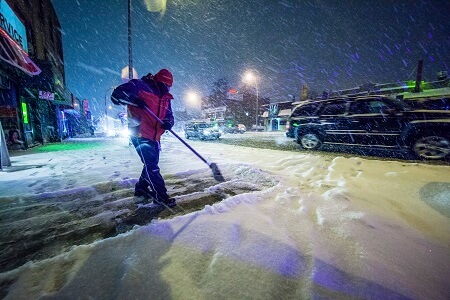
When compared to the warm summer days enjoyed during July, the cold and low-sunlight days of winter can be linked to a two-fold increase in the number of heart attacks.
"This time of year, the cold, low-light, winter months, are peak timing for heart attacks," said Dr. J. Quen Dickey, a cardiologist with the McLaren Cardiovascular Institute. "When we compare the statistics from January to those from July, we see about twice as many heart attacks during the winter months. I cannot stress enough for everyone to take precaution."
Citing a study published in the UK, Dr. Dickey noted that each 1.8 degree Fahrenheit drop in temperature equates to 200 more heart attacks per day.
"This is a direct correlation that those at greater risk should consider and prepare for," he said.
Caused by the cold air delivering less oxygen to the blood, which in turn delivers less oxygenated blood to the heart, the weather increases the risk of a heart attack. At the same time, the air makes the body colder, forcing the heart to work harder to keep the body warm.
"The heart demands more oxygen-rich blood, but the supply is low," Dr. Dickey said.
Another cause includes blood vessels constricting due to the cold, increasing blood pressure.
Risk factors:
Aged 75 to 84 years old
Known coronary disease
Within two weeks of cold exposure/weather change
Warning signs:
Chest pain/discomfort
Upper body pain
Discomfort in arms, jaws, back, neck and stomach
Nausea, lightheadedness, weakness, dizziness, hiccups, sweating, cold sweats
Seasonal risks:
Overexertion
Cold exposure
Neglecting prescriptions (by staying indoors)
Vitamin D (sunlight) deficiency
Physical inactivity
Infections
Precautions to take:
Bundle up tight
Keep good lifestyle habits (good diet, don't over indulge, limit alcohol intake)
Keep a good mood
Take all medications as prescribed
Take additional precautions to avoid flu
If you or a loved one starts to experience heart attack symptoms, get to the nearest emergency department - each minute after the on-set of symptoms lowers the survival rate by 7 to 10 percent.
Learn more or make an appointment at mclarenheart.org.